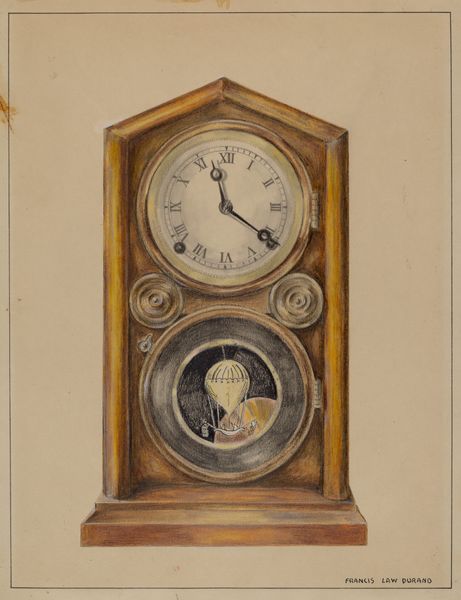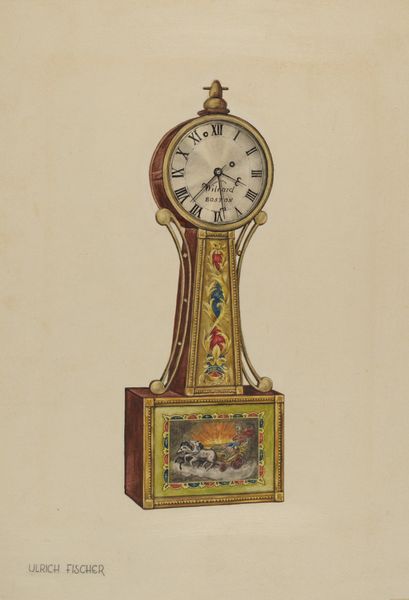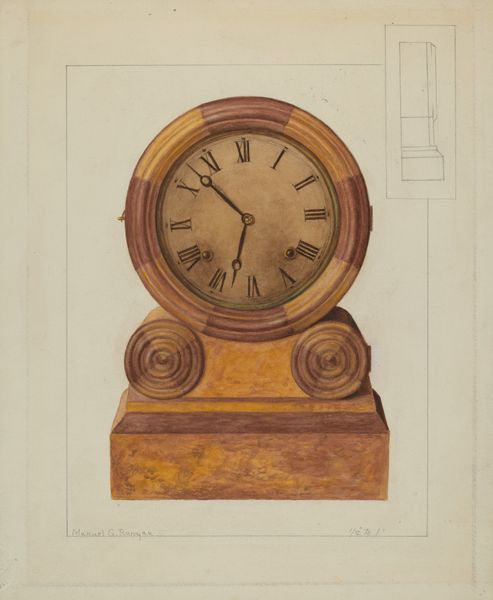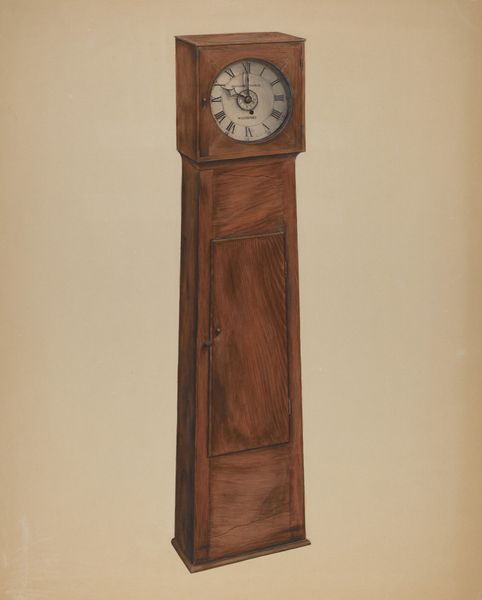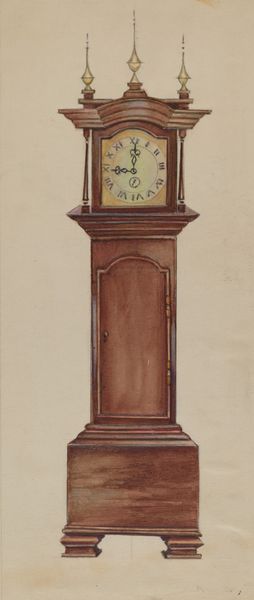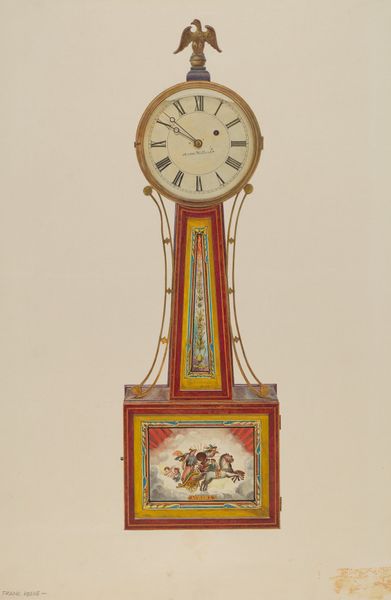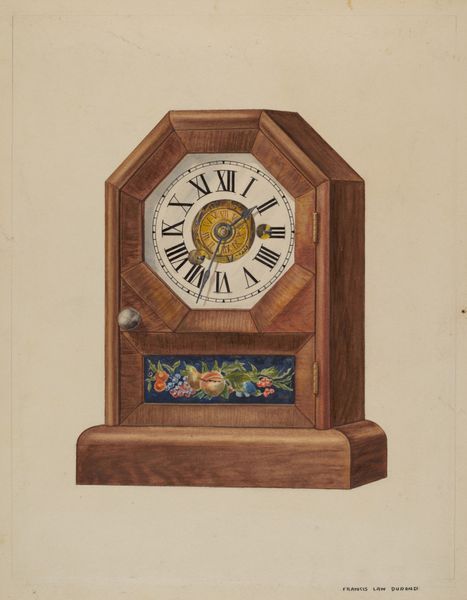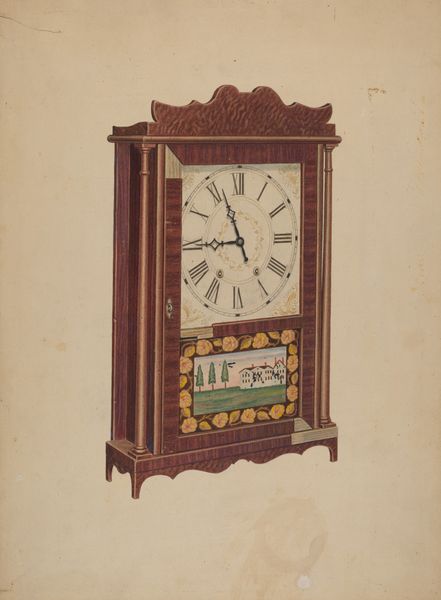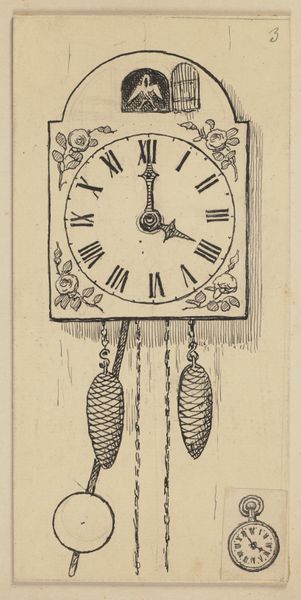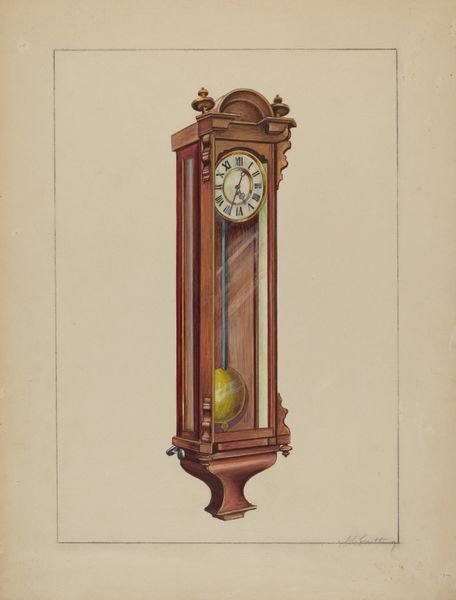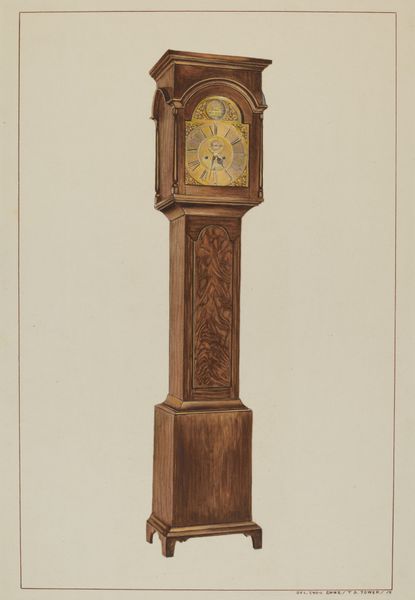
drawing, watercolor
#
drawing
#
caricature
#
watercolor
#
watercolour illustration
#
genre-painting
#
decorative-art
#
watercolor
Dimensions: overall: 49.5 x 29.3 cm (19 1/2 x 11 9/16 in.) Original IAD Object: 1/2 size rendering
Copyright: National Gallery of Art: CC0 1.0
Editor: This is Therkel Anderson's "Wall Clock," a watercolor and drawing from around 1938. It's quite charming, almost whimsical. What immediately strikes me is how the medium transforms an everyday object. What can you tell me about it? Curator: It's interesting how Anderson uses watercolor, typically associated with "fine art," to depict a functional object. Notice the detail given to the materiality: the wood grain, the sheen on the weights. It raises questions about the perceived hierarchy between art and craft, doesn’t it? Was Anderson perhaps elevating the ordinary through meticulous labor? Editor: That's a really interesting way to look at it. I hadn’t considered the labor aspect so directly. The delicate floral designs now seem less like mere decoration and more like an act of care and attention to the craft object. Curator: Exactly. Think about the social context too. In 1938, was this a comment on mass-produced goods versus handcrafted items? The watercolor medium itself could be seen as a rejection of industrial processes, emphasizing human skill and artistic intervention. What statement does that medium of choice make for that time period? Editor: So, the choice of watercolor becomes a statement in itself, almost a political one in relation to industry? The medium transforms the mundane into a celebration of craftsmanship. Curator: Precisely! And think about the accessibility of watercolor as a medium. Was Anderson making art, and commentary, for a specific class, making art with accessible material for potentially universal commentary? This piece reminds us to consider the social implications inherent in artistic creation and material choices. Editor: I'm definitely leaving with a new appreciation for the artist's intent behind a seemingly simple subject. Thank you for this analysis! Curator: My pleasure. It's always insightful to consider art through the lens of materials and the social conditions of its production.
Comments
No comments
Be the first to comment and join the conversation on the ultimate creative platform.
